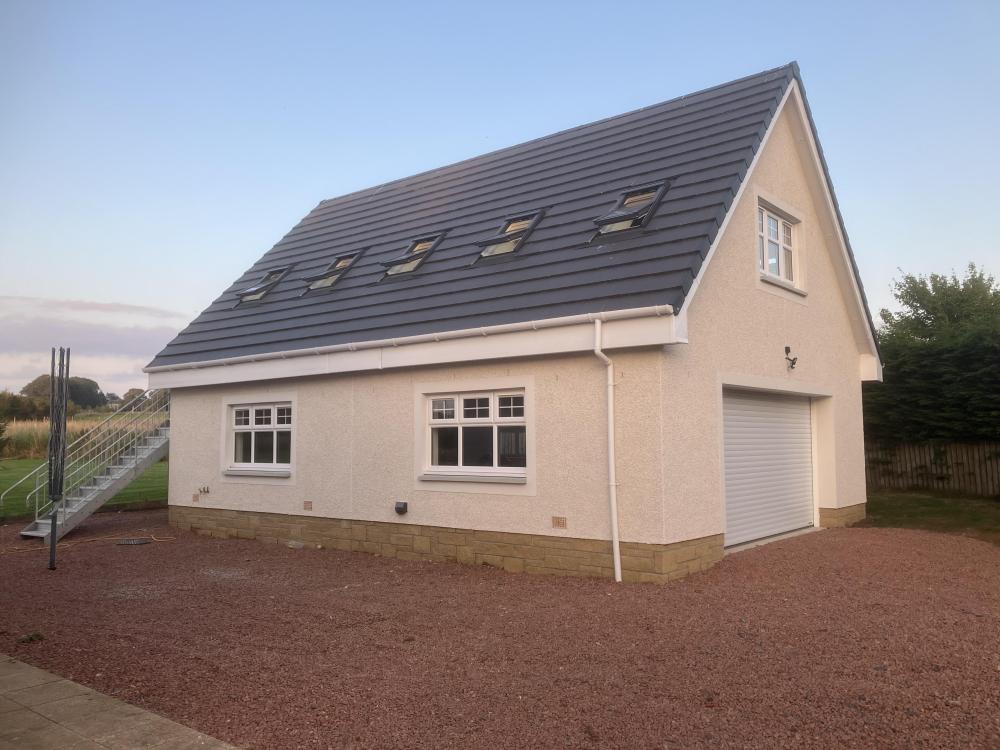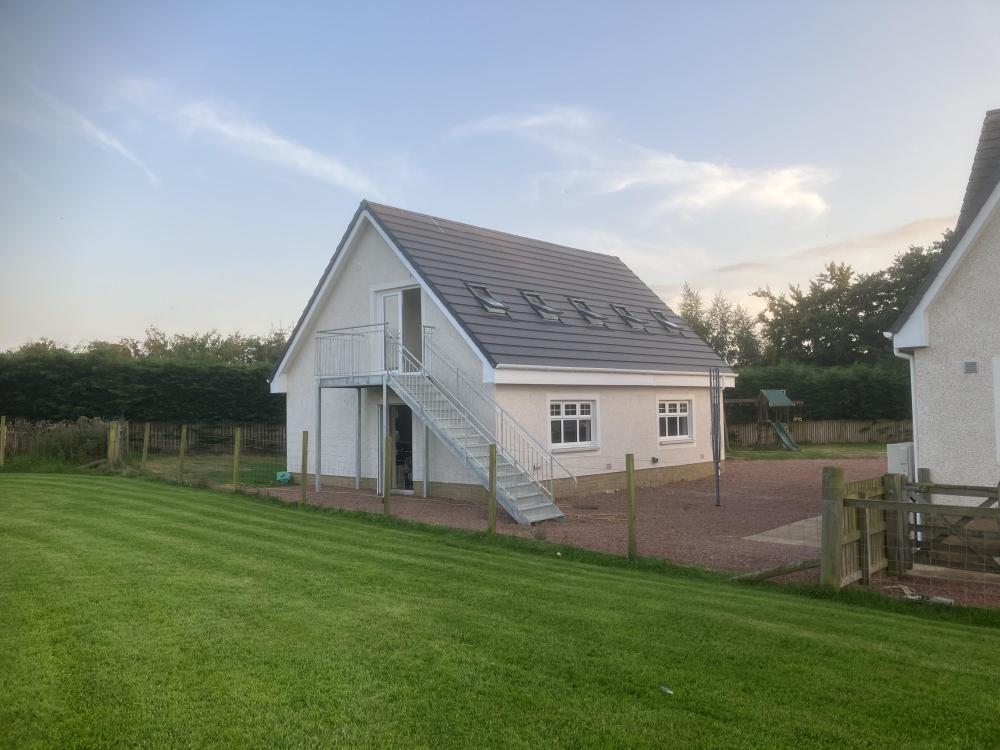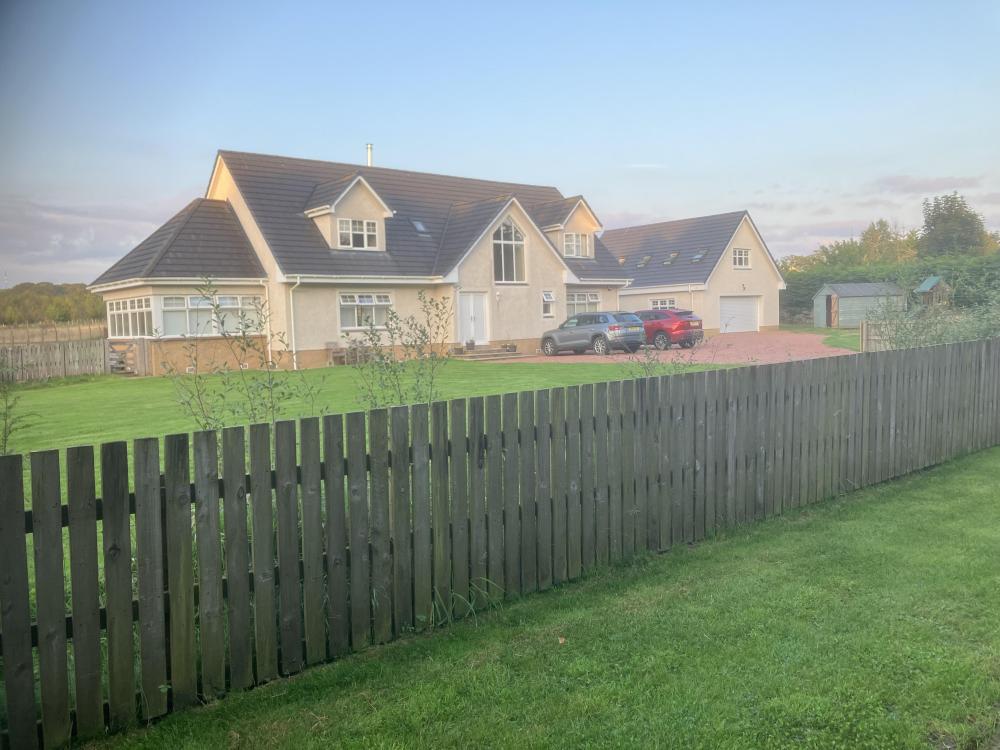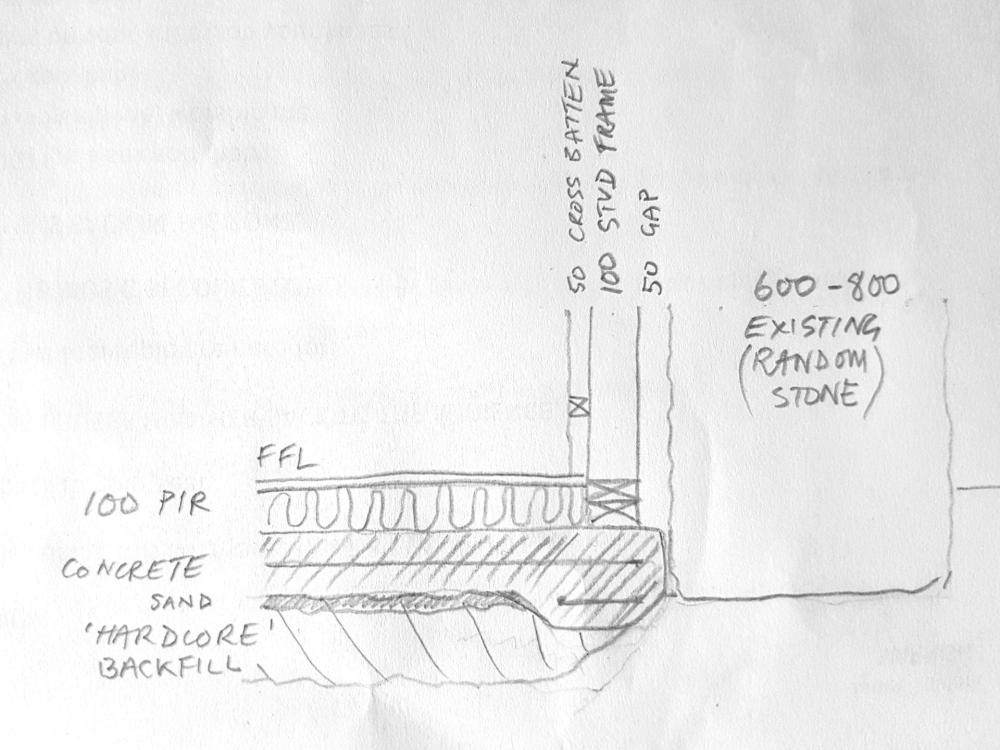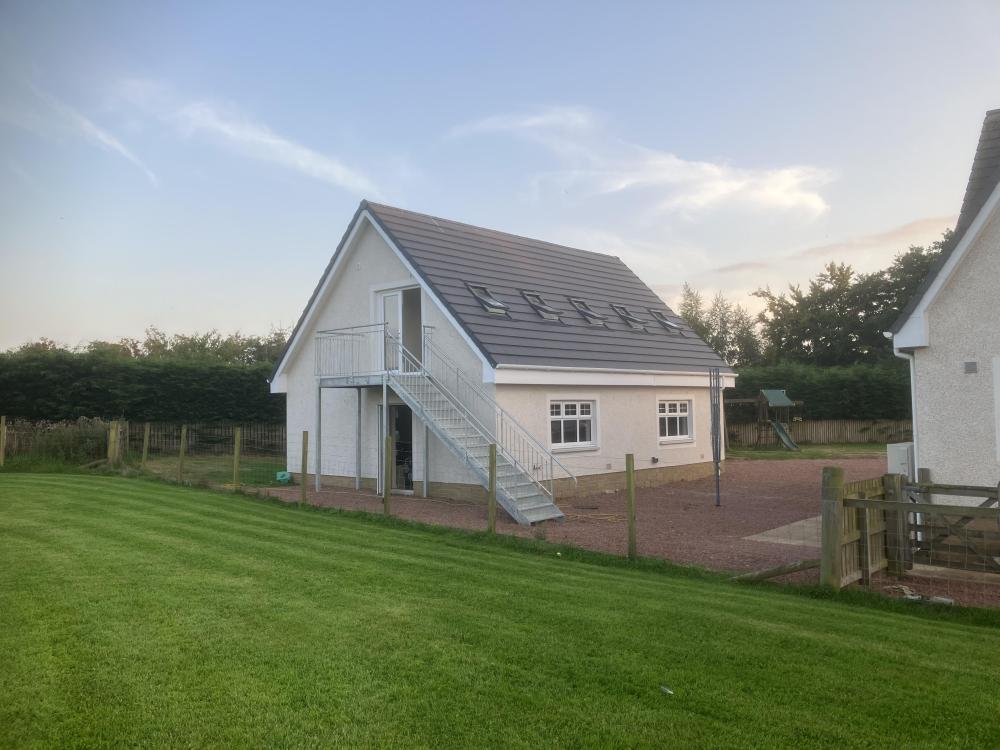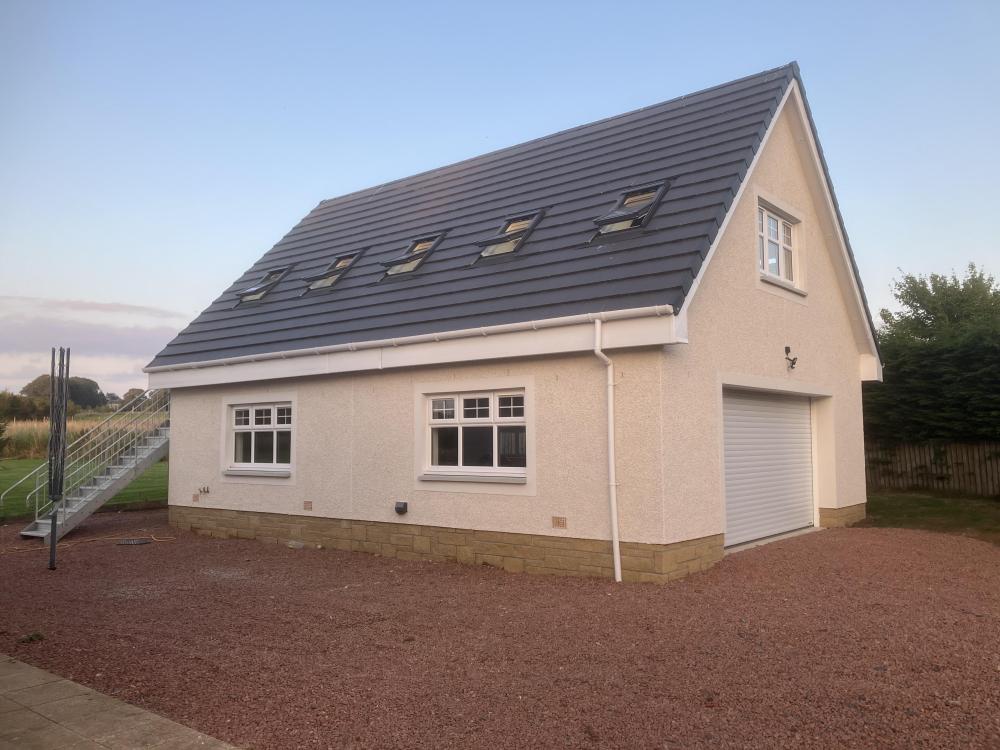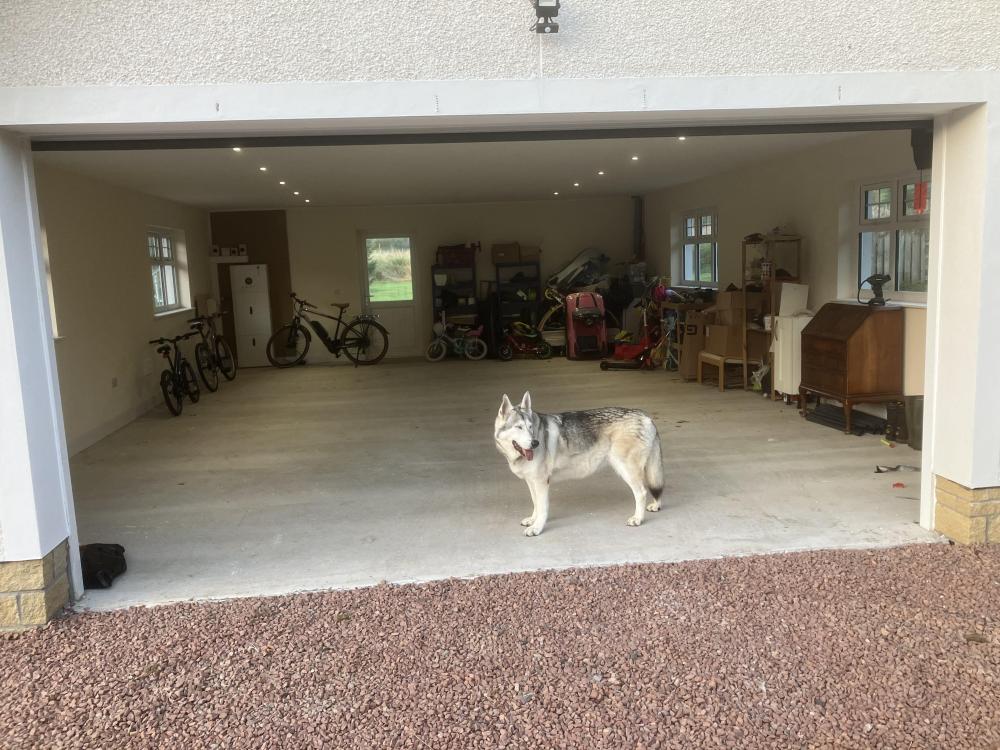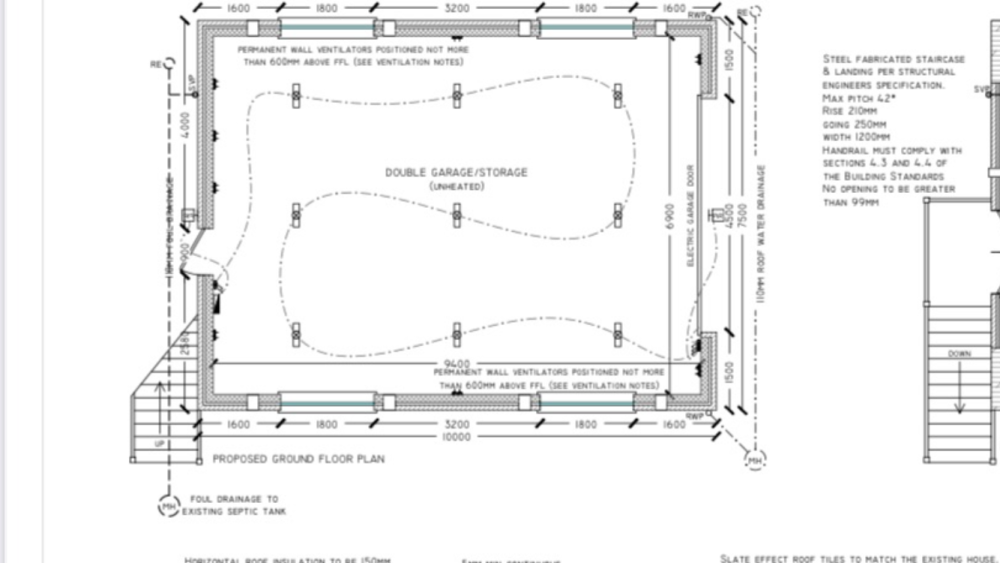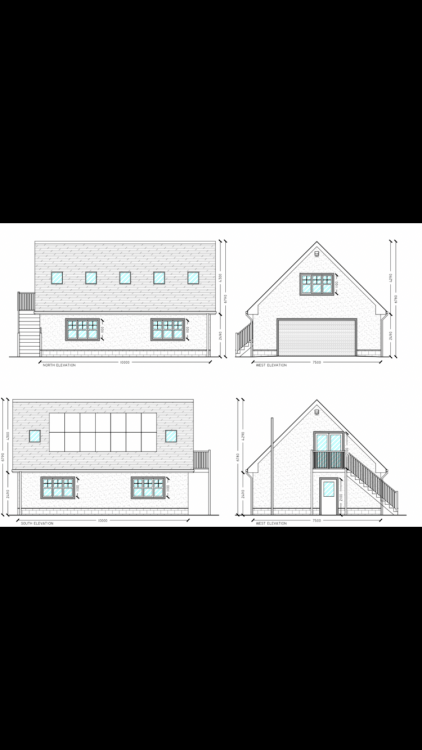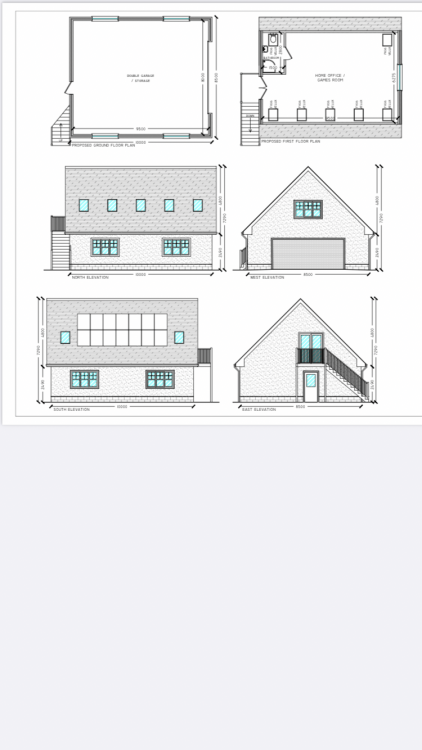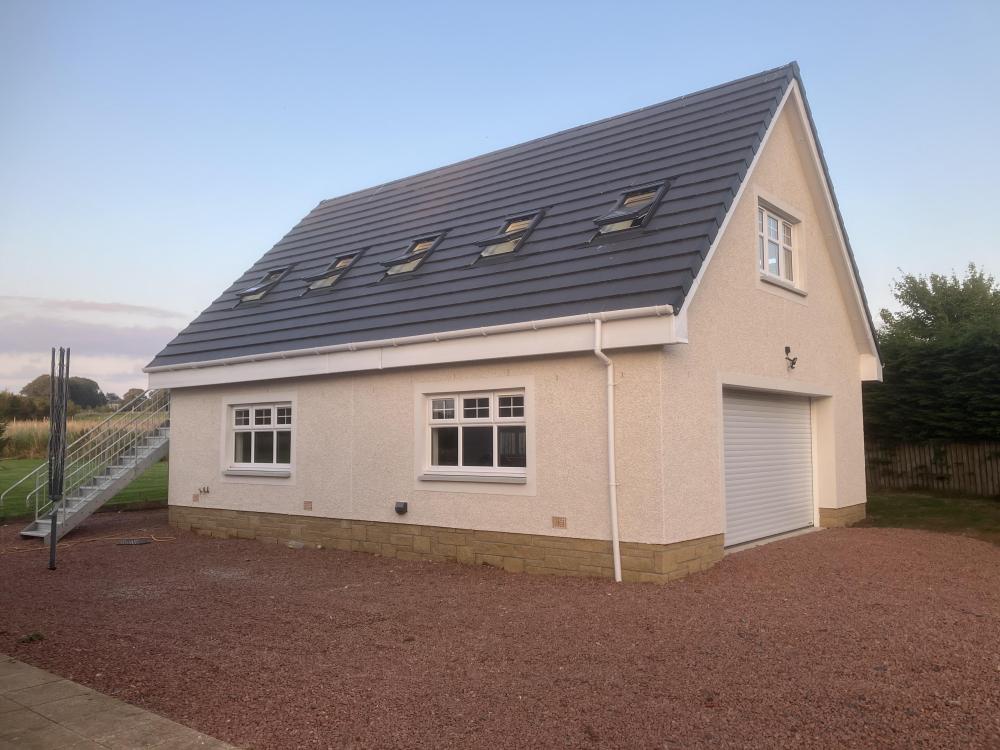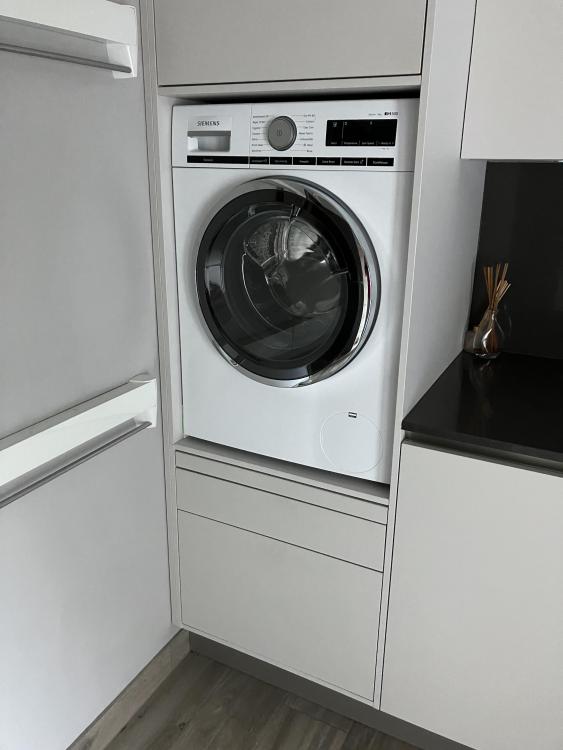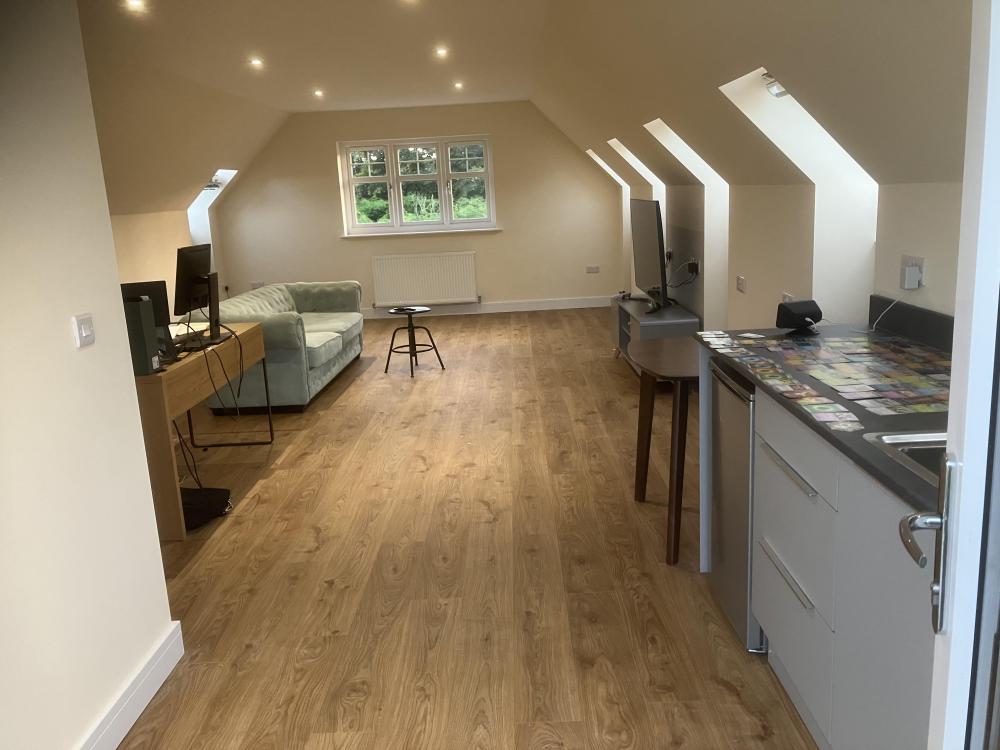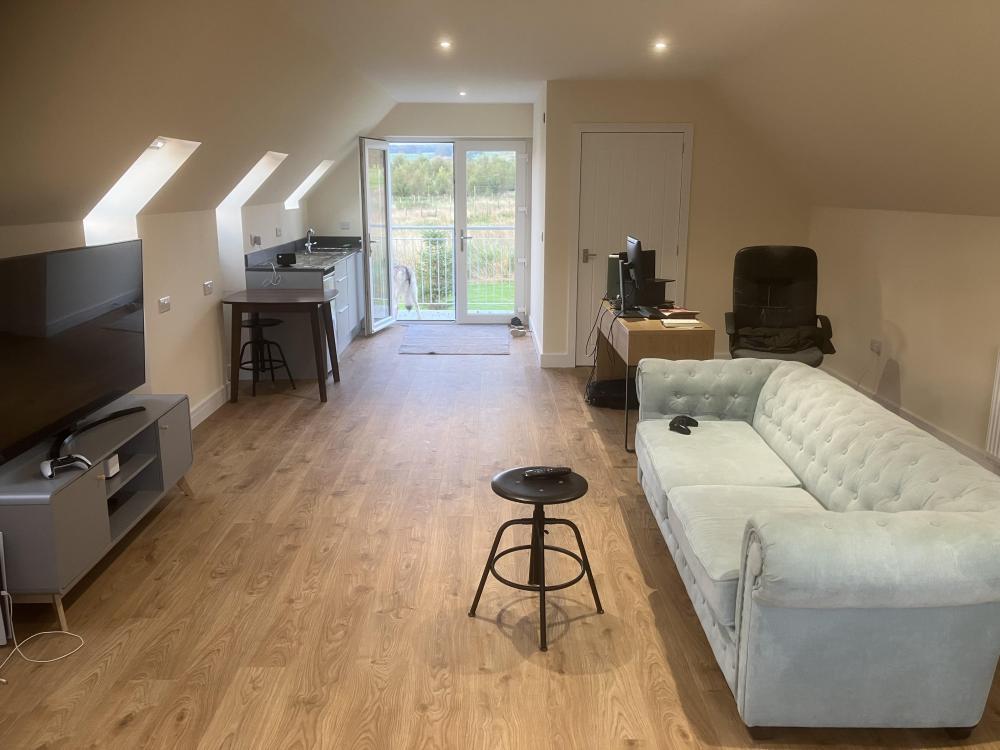Leaderboard
Popular Content
Showing content with the highest reputation on 09/18/23 in all areas
-
Nice to meet you all. I built my house 7 years ago. Found a 3 acre plot with detailed planning on it and made a few internal layout changes. We then contracted the sellers, who happened to build houses, to do the build. it went fairly smoothly and have never regretted it. I have tried to encourage so many people to self build but they are just daunted. this year we have kicked it on a level. We’ve just finished finally building the garage. We made do with a shed for 7 years as we spent the money on the build, adding things like underfloor heating, wood burner, oak fittings etc. I also changed the oil boiler this year for an ASHP. Got at £9k gov grant and it’s been great. On the garage we added a 5.46kW solar array and a 10KW battery. Didn’t get much out of it this weekend but we’ve hardly spent a penny all summer. we are allowed one more building on the property for certain. A lot of people round here have those green steel barns but now I’m looking for inspiration for something that’s more multi-purpose/ convertible so will probably be checking out the garage/workshop pages quite a bit. Will also enjoy looking at other new builds as they go. we have a family plot in the highlands as well, might need to look at doing that in the next couple of years.4 points
-
Inflated costs. My 4kw PV, ASHP and cylinder, UFH will /is DIY install and it will cost less than £7k, but self build is horses for course's.👍2 points
-
No. internal bladder provides the boost untill the incoming pressure equals the outgoing pressure. Then it re-charges via the water mains.2 points
-
We went airtight but weren't attempting PassivHaus level of insulation just current (2018) regs plus a bit more, where it was doable hence only 100mm underfloor insulation. The drawing shows roughly the average situation along 30m of existing 4 walls - but the sections where it was 'worse' were not long enough to worry about. It helped that the subsoil on which the old walls were built was gravel based (raised beach). The internal stud frame carries the weight of the new upper storey, hence the need for thickening of the slab at the perimeter. The engineer originally proposed that the new roof also rest on the new inner stud frame and that would have required even deeper digging and concrete. I vetoed that proposal in anticipation of the old walls being very shallow and I am very glad I did. The thickened reinforced concrete perimeter was wider than shown in my sketch. Sketch is not very to-scale. (Airtight and damp proof layers not shown, for clarity)2 points
-
Very nice garage, I am quite jealous. That’s on the list for when I get a plot near to me somewhere. Currently on the hunt and hoping to find something in Wales that is very good bang for the buck and to build the forever home in the background. Been busy creating homes for others for a long time, my turn soon hopefully!2 points
-
1 point
-
Hi All. We are hoping to be first time self-builders in rural Perthshire/Stirlingshire next year....when we find a plot of land. We have a design/layout in mind though appreciate this will probably need to be amended to allow for the aspect and topography of the site. Whilst the search goes on we have time to absorb plenty of knowledge from the experience of forum members. Questions of help will no doubt follow Thanks1 point
-
I should’ve held on a bit probably- I’m just too keen 🤦♂️ I was expecting them to come back wanting MCS info for the ASHP and for the switch to take longer. It’s only been 12 C outside this week so I was expecting the heating to kick in at some point but no…1 point
-
Once over we would render the reveals But now most have cavity closers So if there’s enough room we line them with plasterboard Or with most of the tilt and some of the Ally frames We simply finish the edge with a stop bead and tile directly onto the block reveals1 point
-
I'd say you're on the correct path with a lime mix. I'd be tempted to put in a bit of cement for a small bit of strength. It'll be a compromise between not trapping moisture in the wall and putting something in that isn't too weak.1 point
-
1 point
-
1 point
-
1 point
-
I agree, Jubilee (a brand name btw) clips are very good, but I bet that is just a bog standard hose clip.1 point
-
Hi all, looking some advice on the question of vapour barriers. Out roof make up (from outside to in) is 150mm composite panel (essentially PIR sandwiched between sheet metal) 200mm rockwool plasterboard I had planned to tape the internal seams between the composite sheets for airtightness. Do I also need a vapour barrier? Many thanks Tom1 point
-
As Jay says, put in your pipe in as 32mm and you'll get a big benefit regardless of the last couple metres to the main.1 point
-
If they're connecting you for free, run a 32mm MDPE on your side, they'll convert down to 25mm at the meter, but it gives you the ability to upgrade later if you really want to. Then stick a decent sized accumulator directly off your rising main, after a DCV. This is also what I'm currently doing, inc. the 32mm MDPE down to 25mm at the meter1 point
-
just take the free plastic replacement and fit an accumulator, its what we are doing.1 point
-
We were on cosy before Flux and we will be moving back to Cosy as soon as I decide to put the heating on (holding out for at least mid October)!1 point
-
1 point
-
Agreed on the money. It will be better in the long run and you will get the house you want, so that is the benefit at the moment. Material and construction costs have put paid to making immediate money on a new build. Our house without the garage is 294sqm and the construction cost all in was £300k in 2016. I feel very lucky, it would closer to £450k now and barely viable. I would still do it though for the aforementioned benefits.1 point
-
Local guy who is really more of an architectural technician. I know him a little bit and I just worked with him and specified what I wanted. He got it through planning and the structural engineer didn’t really add much other than reassurance. it was really Pasquill, the attic roof truss designers who made the difference. I was a bit worried from the final drawing that the room was going to be too long and narrow. I spoke to them and also about the possibility of storage in the walls. They designed it with the recesses which are great and otherwise the veluxes would have been odd and too low. But if they were higher you wouldn’t be able to see out of them. So one side has 5 recesses and works great. The other one side has 2 recesses but a big long section of storage in the eves, accessed by a side panel at one of the recesses.1 point
-
1 point
-
1 point
-
1 point
-
"Bit like a car radiator" You can make that on the 40mm exit pipe. Use a straight solweld pipe connector. Cut a 3mm ring, and glue it on the end.1 point
-
1 point
-
1 point
-
https://www.alfalaval.com/globalassets/documents/products/heat-transfer/finned-tube-air-heat-exchangers/product_leaflet_ace_model_a_en.pdf https://www.alfalaval.co.uk/products/heat-transfer/finned-tube-air-heat-exchangers/finned-tube-air-heat-exchangers/finned-tube-air-heat-exchangers/1 point
-
I’ve just switched to Cosy and Outgoing Fixed from Flux. They didn’t ask for any evidence of having an ASHP and I’m planning to use the cheap rates for battery charging as well as running the ASHP. It only took a minute and it was live straight away- if the SEG doesn’t automatically change (mine stayed on Flux export for a bit) then give them a nudge (or not 😉).1 point
-
dig down as far as you need to get 300mm of XPS, conc in around the pillars at same time. IT just shows the utter madness of the system, they actually want to prevent you insulating below ground because it will effect who exactly ? No one. Just a rule on a pieve of paper somewhere written by a faceless unsackable cretin. Can see why the french shot en mass thousands of the ones in charge.1 point
-
Our washing machine is integral and not floor mounted on the bosses insistence to make loading/unloading easier. I was terrified at the prospect of having a washing machine in a kitchen unit AND off the ground, I could foresee no end of calamity’s befalling us. Two years on and I’ve stopped checking it when it’s on a spin cycle. It hasn’t fallen out of its cubby hole. It hasn’t moved at all. Before the spin starts the washing machine turns the clothes and agitates the drum to try and balance the load. If it can’t balance the drum to a reasonable level it won’t spin. Just to clarify. The unit is specifically designed to take a washing machine and is suitably reinforced. It also has to be fitted either between other units or, as in our case, a wall and units. The wall hung cupboards have to be there as well.1 point
-
Hi, I am new to buildhub, and looking forward to participating in the community. I have been doing weekends DIY for a while. Since retiring from my job last year I have embarked on renovating our home. Looking forward to sharing my experience and learning from the community members experience. Mark1 point
-
So to recap: we bought an old house with a bit of land at the back. We tried to get permission to knock it down and do a new build passiv house in the backland. The council said no no no, we lost an appeal, then put in ridiculous plans for a massive extension with basement on the existing old house, plus a large stable block on the back land where we wanted the new build. Council said yes yes yes, thats fine, please go ahead.... Having never built anything major before, we hired a 9 ton digger and a small tipper truck and set about digging a hole. The basement would start over 4m back from the existing rear wall of the old house and as long as we graded the excavation where possible and used plenty of sheet pilings, it would work out fine. To get rid of the clay soil, we just spread it out on the land at the back saving quite a bit on grab lorries. We originally planned for a four week hire of the plant, but we ended up taking about six weeks. Prior to digging I made a few test trenches to check the soil and water level. We also found an in depth soil survey from a major development next door. Once we had the hole dug in the right place, and sorted some temporary drainage, we set about levelling and pouring the basement slab. This was designed to be 300mm concrete on top of a tanking membrane, with tons of rebar. We just followed the drawings and building control came a few times to check it all. The waterproofing was overseen at each stage so we could get the warranty as well. We poured the slab in winter of 2022 and had a few cancellations due to frost. In the end we made an insulated temporary roof over the basement and used gas heaters the night before the pour just to be safe. The concrete went in very well, i think it was two loads of waterproof concrete, then we could start on the nudura walls. The hardest part of this section was wiring all the rebar together and getting the 20mm OD L bars in place which connected the slab to the nudura walls. These were doubled up all around the perimeter every 8" and a pig to get in amongst all the rebar mesh. Assembling the nudura walls was very straight forward, once i got my head around the idea of a common seam - where due to the plan measurements, the nudura blocks needed cutting and joining together. We had done the nudura course and the rep was very helpful with all my questions. Once built up, building control came out again and we ordered another three loads of water proof concrete for the walls. Where the walls joined the slab, we used an expanding waterbar and kept it dry until we poured the walls. We hired a concrete pump for the pour and because it was a basement we just used the nudura walkways and scaffolding to allow the pump hose to get round the whole perimeter. I was concerned about blow outs- especially on the first load dropping down into the bottom of the wall so I over did the shuttering on the outside of the nudura - including 220mm x 50mm floor joists screwed all around the perimeter outer edge, plus lots of OSB shuttering at all the weak points. It all worked well and it was a major relief to get the walls filled up.1 point
-
If those pipes are connected to a saniflo you got what you deserved for dining with the Devil!0 points
-
Well of course it has one. And the heli-pad? Seriously, you need to stop now OK0 points
-
Thanks guys, the upstairs of the garage is my man-cave/home office. Wanted to do it for a while and probably took 2 years including planning. Planning didn’t take long but finding a builder did and then we had to wait before they could start. Then the dug the hole in December and everything froze up. It was really start of Feb before we got going. Finished mid August. Could have been finished faster but we weren’t in a rush and have a good relationship with the builders.0 points


